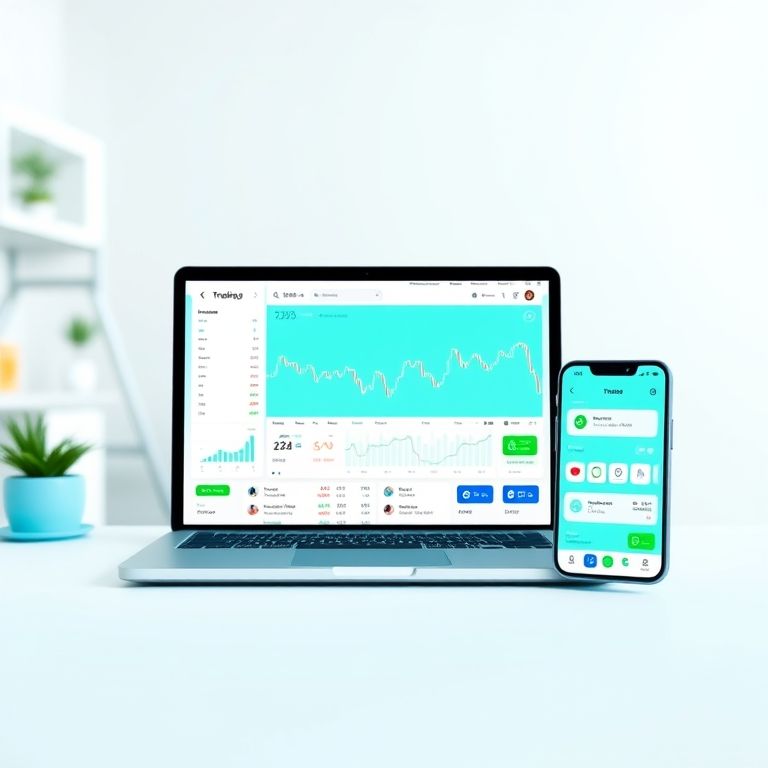Best free trading platform demos for beginners
Best Free Trading Platform Demos for Beginners
Introduction
Starting out in trading can feel like learning a new language while juggling several markets at once. The good news: most reputable platforms offer free demo accounts that mimic real market conditions—real-time quotes, order types, and risk controls—without risking real money. For beginners, demos are your rehearsal room: you test ideas, refine risk management, and build confidence across asset classes like forex, stocks, crypto, indices, options, and commodities. This guide highlights practical demos, what to look for, and how to stitch them into a practical learning path that fits today’s evolving financial landscape.

What to look for in a great beginner demo
- Realistic data and execution: The best demos feed real-time prices and allow you to place orders with latency and slippage that resemble live trading. This helps you gauge whether a strategy holds up under pressure.
- Broad asset coverage: A robust multi-asset demo saves you from switching platforms as you expand from stocks and forex to crypto, indices, options, and commodities.
- Clear risk controls and learning aids: Built-in stop losses, position sizing, and risk dashboards help you practice prudent money management. Integrated tutorials or guided missions keep you moving forward.
- Backtesting and journaling: The ability to backtest simple ideas and keep a trading journal supports learning from mistakes and tracking improvement over time.
Top platforms to try for multi-asset demos
- TradingView with paper trading: Great for visual learners. You can practice stocks, forex, crypto, and indices all in one place, with customizable charts and a community library for ideas. Pros: intuitive charts, social ideas, flexible backtesting. Cons: paper trading sits on top of the charting layer, not a full broker engine.
- Thinkorswim (TD Ameritrade) paperMoney: A standout for beginners interested in stocks and options with rich charting and extensive paper trading features. Pros: realistic order flow, strong educational content, solid options strategies. Cons: no direct crypto trading in the demo; the interface can feel dense at first.
- Interactive Brokers Paper Trader: A true multi-asset environment with global markets. Pros: broad asset class coverage (stocks, forex, futures, options, bonds), advanced order types, realistic commissions for later scaling. Cons: platform can be complex for newcomers; mastering the menu takes time.
- eToro Virtual Portfolio: Good for those drawn to social trading and a multi-asset mix (stocks, crypto, indices, commodities). Pros: easy onboarding, copy trading concepts, approachable demo. Cons: not all markets are as deeply liquid in demo as live, and some features are tailored to social trading rather than pure execution.
Learning path across assets: turning demos into competence
- Start with one asset class, learn the rhythm: pick a market you’re curious about (e.g., major forex pairs or large-cap stocks) and practice basic order types, risk controls, and journaling.
- Expand gradually: once you’re comfortable, bring in a second asset class (like indices or commodities) to see how your risk plan adapts across markets.
- Practice risk management every session: set a max daily loss, use fixed position sizes, and log outcome trends to avoid overtrading.
- Integrate broader trends: once you’ve got the basics, try simulated strategies that incorporate crypto or options on a smaller scale, always with a solid paper-trading risk framework.
- Reflect and adjust: review trades weekly, track win rates, and refine entry/exit rules. The goal is consistency, not speed.
The future of training: DeFi, smart contracts, AI, and prop trading
- DeFi and smart contracts: Decentralized exchanges and automated market makers open new learning curves. Demos can introduce you to liquidity provision, impermanent loss concepts, and the importance of smart contract risk—skills that translate when you step into live DeFi trading or venture into tokenized assets.
- AI-driven trading and smart tooling: AI assists with pattern recognition and backtesting, but it also demands strong risk controls and a critical eye for overfitting. Demos that let you test AI-assisted strategies in a risk-free environment are becoming increasingly valuable.
- Prop trading growth: Proprietary trading firms continue to embrace rigorous evaluation and funded accounts. Demos help you build the discipline and track record required to pass bootcamps, while simulating the pressure of real-money risk management.
- Future trend takeaway: the smartest beginner path blends solid demo practice across multiple asset classes with awareness of DeFi risks, AI tools, and the realities of funded trading programs.
Tips for reliability and practical strategies
- Treat a demo like the real deal: adopt the same daily routine, risk rules, and journaling you’ll use with real money.
- Beware demo caveats: liquidity and slippage may differ from live markets; use conservative estimates and test under various volatility scenarios.
- Build a simple rule set: define a clear entry, exit, and risk rule for each asset class; test it in backtests and in paper trades.
- Document lessons learned: a well-kept journal accelerates insight and helps you avoid repeating mistakes.
Slogans and takeaways
- Practice today, trade smarter tomorrow.
- Demo now, master later, profit sooner.
- Best free trading platform demos for beginners—where your confidence becomes your capital.
If you’re just stepping into the world of trading, pick one demo that covers at least three asset classes, set a strict risk cap, and commit to a weekly review. The combination of hands-on practice, structured learning, and exposure to emerging trends can turn a cautious beginner into a steady, capable trader.
YOU MAY ALSO LIKE




